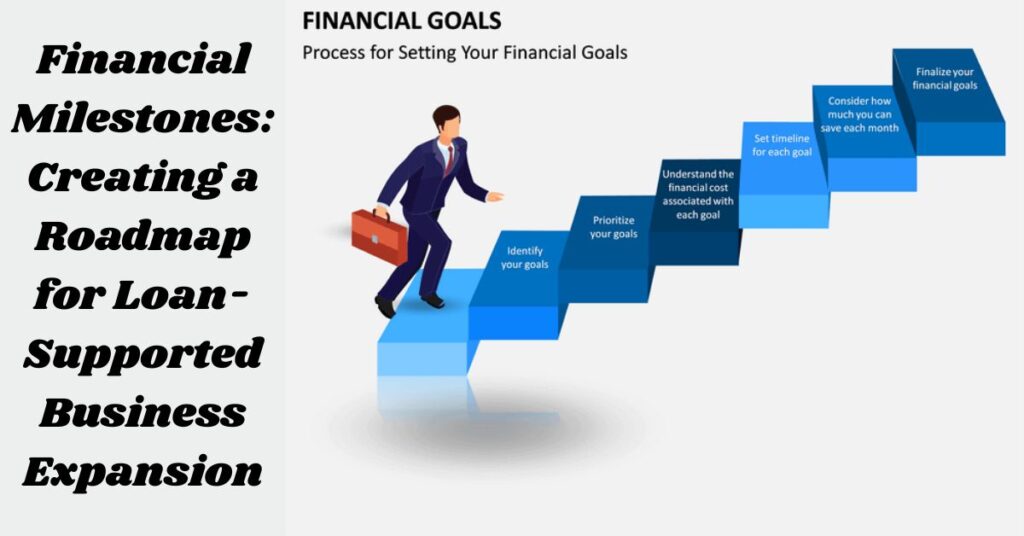Introduction: The Power of Ambition in Business Growth
In today’s competitive business landscape, ambition serves as the driving force behind entrepreneurial success. However, vision alone cannot transform dreams into reality without proper financial backing.
Business loans bridge this gap, providing the necessary capital to fuel growth initiatives and market expansion. When approached strategically, financing becomes more than just borrowed money it becomes a catalyst for business prosperity.
This comprehensive guide explores how entrepreneurs can capitalize on their ambition through a holistic approach to business loans, transforming financial tools into powerful engines of sustainable growth and long-term success.
Harnessing Entrepreneurial Vision: The Intersection of Ambition and Financial Strategy
Ambition drives every successful business venture. It pushes entrepreneurs to take calculated risks and explore new horizons.
The path to success requires more than just dreams. It demands a concrete financial strategy.
- Vision transforms ordinary businesses into extraordinary enterprises
- Financial backing turns ideas into tangible results
- Strategic planning bridges the gap between ambition and achievement
- Successful entrepreneurs combine passion with practical financial solutions
- Business loans provide the necessary fuel for ambitious ventures
The Power of Ambition in Modern Business
Ambition serves as the cornerstone of entrepreneurial success. It motivates business owners to overcome obstacles.
Resilience and determination stem from ambitious goals. Every major business success story begins with a vision. Financial tools help ambitious entrepreneurs realize their full potential.
Aligning Financial Decisions with Business Vision
Your financial choices must support your business vision. Strategic investments require careful planning.
Business loans should complement your growth trajectory. Align borrowing with your long-term objectives. Successful entrepreneurs view finances as enablers, not obstacles.
Strategic Business Loan Selection: Matching Financial Tools with Growth Objectives
Choosing the right business loan is crucial for success. Different growth stages require different financial tools.
The loan you select should match your specific needs. Not all financial resources serve the same purpose. Smart entrepreneurs carefully evaluate loan options.

- Term loans support long-term investments and major purchases
- SBA loans offer favorable terms for qualifying small businesses
- Lines of credit provide flexible funding for variable expenses
- Equipment financing helps acquire necessary business tools
- Invoice financing improves cash flow management
Understanding Loan Types and Their Applications
Each loan type serves a specific business need. Term loans work best for substantial investments. SBA loans reduce risk for small business owners. Lines of credit offer flexibility for ongoing expenses.
Equipment financing preserves working capital. Invoice financing accelerates cash flow from accounts receivable.
Evaluating Loan Terms and Conditions
Interest rates impact your total repayment amount. Repayment schedules must align with your cash flow.
Loan terms should accommodate your business cycle. Watch for hidden fees and penalties. The best loan offers favorable terms without restrictive conditions.
Beyond Capital: How Business Loans Transform Ambitious Ideas into Market Reality
Business loans do more than provide money. They transform concepts into market realities. The right financing accelerates your business timeline.
Investment opportunities become accessible with proper funding. Loans help bridge the gap between ideation and implementation.
- Expansion into new markets requires substantial capital
- Product development accelerates with proper funding
- Hiring talented staff becomes possible with financial backing
- Marketing campaigns gain momentum with adequate resources
- Business expansion happens faster with loan support
From Concept to Market: The Role of Financing
Ideas need financial backing to reach the market. Capital acquisition speeds up development timelines. Market entry requires substantial funding.
Customer acquisition costs demand upfront investment. Business loans provide the necessary runway for new ventures.
Case Studies: Successful Business Transformations Through Strategic Financing
Many successful businesses leveraged loans for growth. Strategic borrowing helped them capture market share. Entrepreneurial growth often correlates with smart financing.
Industry leaders use loans to maintain competitive advantages. Small businesses become industry players through strategic borrowing.
Building Financial Resilience: Responsible Loan Management for Sustainable Growth
Sustainable growth requires responsible debt management. Loan repayment should never cripple operations.
Financial health depends on balanced borrowing practices. Successful businesses manage debt strategically. Overextension puts your entire operation at risk.
- Create realistic repayment schedules aligned with revenue
- Monitor cash flow to ensure timely loan payments
- Maintain emergency reserves for unexpected challenges
- Regularly review debt-to-income ratios
- Practice responsible loan management at all times
Creating a Sustainable Debt Structure
Your debt structure must support growth, not hinder it. Prioritize loans with favorable terms. Balance short-term and long-term obligations.
Financial planning includes debt management strategies. Sustainable debt supports business prosperity without creating undue stress.
Warning Signs of Unhealthy Debt Practices
Watch for increasing reliance on debt for basic operations. Declining financial health signals trouble. Missing payments damages your credit score.
Constantly refinancing indicates fundamental problems. Healthy businesses use debt strategically, not desperately.
READ THIS BLOG: Newsletter from ShopNaclo: How a Modern Brand Elevates Engagement Through Creative Email Marketing
The ROI Perspective: Measuring the Impact of Loan-Funded Initiatives
Every business loan should generate positive ROI. Strategic investments must produce measurable returns. Loan costs should be outweighed by resulting benefits.
Tracking performance helps justify borrowing decisions. Smart entrepreneurs consistently measure outcomes against expectations.
- Establish clear metrics for loan performance evaluation
- Calculate true cost of borrowing beyond interest rates
- Compare projected returns with actual results
- Adjust strategies based on performance data
- Use ROI analysis for future borrowing decisions
Quantitative Measures of Loan Success
Revenue growth provides concrete evidence of loan value. Increased market share justifies expansion financing. Financial growth should outpace borrowing costs.
Improved operational efficiency demonstrates successful equipment financing. Customer acquisition costs decrease with proper marketing funding.
Qualitative Benefits of Strategic Financing
Beyond numbers, loans create intangible benefits. Market positioning improves with strategic investments. Business development accelerates with proper funding.
Employee satisfaction increases with better resources. Competitive advantages emerge from well-funded initiatives.
Navigating the Lending Landscape: Understanding Modern Financing Options for Ambitious Businesses
Today’s business financing environment offers diverse options. Traditional banks represent just one path to funding. Online lenders provide streamlined alternatives.
Financial resources exist for businesses at every stage. Understanding all options improves borrowing outcomes.

- Traditional bank loans offer competitive rates but stringent requirements
- Online lenders provide quick approval with higher costs
- SBA loans reduce risk through government guarantees
- Peer-to-peer lending platforms connect borrowers with investors
- Industry-specific lenders understand unique business needs
Traditional vs. Alternative Lending Sources
Banks offer established lending programs with competitive rates. Online lenders provide faster approval and funding. Business loans from traditional sources require extensive documentation.
Alternative lenders focus on different approval criteria. Each source has distinct advantages and limitations.
The Digital Revolution in Business Financing
Online applications streamline the lending process. Digital documentation reduces paperwork burdens.
Loan application technology improves approval efficiency. Automated underwriting accelerates decisions. Mobile platforms provide constant access to loan information.
From Application to Approval: Streamlining the Business Loan Process for Success
The loan application process requires thorough preparation. Documentation completeness affects approval chances. Understanding lender expectations improves outcomes.
Credit score matters for both approval and terms. Professional presentation increases credibility.
- Prepare comprehensive financial statements before applying
- Develop a detailed business plan highlighting loan purposes
- Document revenue projections and repayment strategies
- Gather proof of collateral if required by lender
- Anticipate questions about business history and prospects
Essential Documentation for Loan Success
Lenders require specific information for evaluation. Tax returns demonstrate historical performance. Financial statements reveal business health.
Bank statements verify cash flow patterns. Business plans showcase future potential and loan utilization plans.
Common Pitfalls in the Application Process
Incomplete applications delay approval decisions. Unrealistic projections damage credibility. Poor credit score history raises red flags.
Insufficient collateral limits options. Lacking a clear purpose for funds reduces approval chances.
Debt as Investment: Reframing Business Loans as Strategic Growth Catalysts
Business loans represent investments in your future. Properly utilized debt creates value. Financial leverage multiplies existing resources.
Successful businesses view loans as tools, not burdens. Strategic borrowing accelerates achievement of business goals.
- Loans provide resources beyond current cash availability
- Financial leverage allows capturing opportunities immediately
- Strategic debt creates competitive advantages
- Well-timed borrowing can preempt market challenges
- Investment mindset changes how businesses utilize loans
The Leverage Effect in Business Growth
Borrowed capital amplifies existing resources. Financial leverage accelerates expansion timelines. Market opportunities don’t wait for organic growth.
Competitors with access to capital gain advantages. Strategic debt helps maintain market position.
Shifting from Cost-Based to Investment-Based Borrowing Mentality
Interest isn’t just an expense it’s an investment cost. Strategic investments generate returns exceeding borrowing costs.
Long-term success requires investment thinking. Value creation justifies financing costs. Successful entrepreneurs focus on returns, not just expenses.
Financial Milestones: Creating a Roadmap for Loan-Supported Business Expansion
Business expansion requires careful planning. Financial milestones provide clear direction. Loan utilization should follow predetermined paths. Tracking progress ensures accountability. Strategic planning includes specific expansion benchmarks.

- Establish clear phases for expansion initiatives
- Create specific metrics for each growth phase
- Set realistic timelines for milestone achievement
- Develop contingency plans for unexpected challenges
- Align loan management with expansion milestones
Setting Realistic Growth Benchmarks
Revenue targets should reflect market realities. Customer acquisition goals need proper funding. Geographic expansion requires phased implementation.
Product development follows predictable timelines. Financial planning includes detailed milestone projections.
Adapting to Market Changes While Maintaining Vision
Market conditions evolve during expansionary periods. Flexibility allows adaptation without abandoning goals.
Risk assessment should be ongoing. Milestone adjustments reflect changing realities. Successful businesses balance persistence with adaptability.
ALSO READ THIS BLOG: Character AI Systems: Understanding Content Filters and User Experience in 2025
Prosperity Beyond Profit: Leveraging Business Loans for Comprehensive Business Development
True business prosperity extends beyond financial statements. Holistic success includes market position, reputation, and sustainability. Strategic borrowing supports comprehensive development.
Business development encompasses multiple dimensions. The most successful enterprises build lasting value.
- Invest in employee development for long-term capabilities
- Build systems and infrastructure that scale efficiently
- Develop intellectual property that creates lasting value
- Create customer experiences that build enduring loyalty
- Establish sustainability practices that ensure future viability
Building Enduring Value Through Strategic Investment
Brand development creates lasting market presence. Operational excellence ensures continued competitiveness. Strategic investments in automation improve long-term efficiency.
Customer relationship systems build ongoing revenue. Technology infrastructure supports future growth.
Balancing Short-Term Results with Long-Term Vision
Quarterly goals matter but shouldn’t drive all decisions. Long-term success requires patient capital deployment.
Some investments take time to show returns. Sustainable growth comes from balanced perspectives. Strategic borrowing supports both immediate needs and future ambitions.
Frequently Asked Questions
How do I determine how much my business should borrow?
Borrow only what generates positive returns. Calculate specific funding needs based on your growth plans and repayment capacity.
What credit score is needed for business loan approval?
Most lenders prefer scores above 680 for favorable terms. Lower scores may still qualify with higher rates or through alternative lenders.
How quickly can I get approved for a business loan?
Traditional banks typically take 2-4 weeks. Online lenders often approve within days, while SBA loans require more extensive processing time.
Should I use collateral to secure better loan terms?
Collateral often secures lower interest rates. Balance improved terms against the risk of pledging business or personal assets.
How do business loans affect my personal finances?
Many small business loans require personal guarantees. Separate business and personal finances when possible and understand liability implications before signing.
Conclusion
Business loans provide the essential bridge between ambitious vision and market reality. Financial tools, when strategically deployed, accelerate entrepreneurial growth and business transformation. The most successful businesses integrate financial planning with operational excellence.
The path to prosperity requires both ambitious goals and practical financial solutions. Strategic planning aligns borrowing with business objectives. Sustainable growth depends on responsible debt management and performance measurement. Today’s lending landscape offers unprecedented opportunities for businesses at every stage.

Jerry is a seasoned SEO expert with a passion for content writing, keyword research, and web development. He combines technical expertise with creative strategies to deliver exceptional digital solutions.










